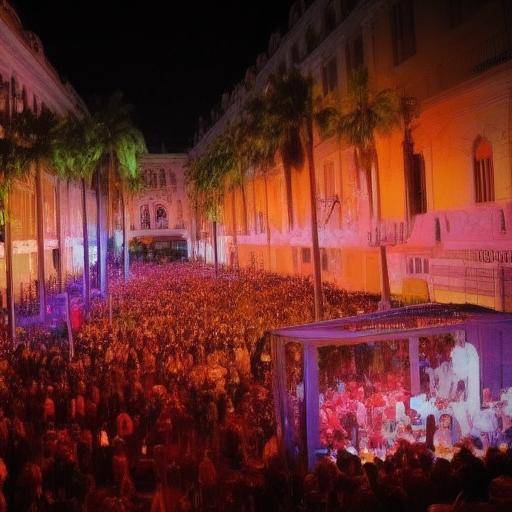
The New Year's Eve, as is known in Spain, is a celebration that marks the end of the year and welcomes the new one. However, this holiday is not limited to a single culture, but is celebrated in various ways in different parts of the world. In this article, we will explore the winter holidays and cultural celebrations that take place around the New Year's Eve in different cultures, offering a global view of how this special moment is lived in different parts of the world.
Introduction
The New Year's Eve, or the last night of the year, is a moment of reflection, celebration and hope for many cultures around the world. However, the way it is celebrated varies significantly from place to place. In this article, we will explore the differences and similarities in the winter holidays and cultural celebrations around the New Year's Eve, providing a complete and enriching view of these traditions so rooted in society.
History and Background
The New Year's Eve has its roots in ancient traditions that have evolved over the centuries. From the Roman festivals of Saturnalia to Christian celebrations and modern cultural influences, the New Year's Eve has experienced a fascinating journey throughout history.
The New Year's Eve, as is celebrated in Spain and many other Spanish-speaking countries, has its roots in Christian and pagan traditions. The custom of the twelve grapes, for example, has its origins in Spain and dates back to the nineteenth century. In contrast, in Scotland, the celebration of "Hogmanay" has deep Viking and Christian roots, with events like the "Fireball Ceremony" that date back to ancient pagan holidays.
Analysis in Deep
Winter holidays and cultural celebrations around the New Year's Eve are much more than just a celebration of the passage of time. They are an opportunity to meet with loved ones, reflect on what has been lived and look to the future with hope.
In many cultures, New Year's Eve is full of superstitions and rituals that are believed to bring luck for the year that begins. Traditions vary, from dressing underwear of a specific color to burning paper figures that symbolize things that you want to leave in the past. These practices reveal the profound emotional and spiritual connection that many people feel towards the transition from one year to another.
Comprehensive review
The way the New Year is celebrated differs significantly between cultures, but there are also common elements that are universal. The idea of dismissing the year that ends and welcoming the new one is something that transcends geographical and linguistic barriers.
Comparative analysis
Winter holidays and cultural celebrations around the New Year's Eve vary widely in terms of rituals, customs and symbolic meanings. However, they all share the same fundamental purpose: to provide a moment of reflection, connection and hope in the midst of the cold and the darkness of winter.
Practical Tips and Accessible Tips
As we enter these festivities, it is important to remember the importance of human connection and gratitude for the year that ends. Regardless of the specific traditions of each culture, New Year is a universal reminder of the importance of dismissing the past with gratitude and looking forward to the future with hope.
Conclusions and FAQs
In conclusion, the New Year's Eve is a celebration that transcends cultural and geographical differences to unite people in a moment of reflection and hope. Whether you are celebrating with the twelve grapes in Spain, participating in the "Fireball Ceremony" in Scotland or even enjoying the "Watch Night" in some African countries, the New Year's Eve is a reminder of the global interconnection of our traditions and the universality of hope.
Frequently asked questions
1. Why is New Year's Eve celebrated?
The New Year is celebrated as a moment of reflection on the end year and a celebration to welcome the new one, in the hope of a prosperous and happy future.
2. What are some common traditions of New Year's Eve in different cultures?
Some common traditions include burning of figures that represent the past, dressing of colored underwear to attract good luck, and closing the year with fireworks and festive music.
3. What is the importance of New Year's Eve in different cultures?
The New Year's Eve represents a moment of family unity and reflection on the year that ends. It is an opportunity to meet loved ones, wish each other the best and welcome the new year.
4. How can the New Year's Eve be celebrated in a respectful way towards other cultures?
By participating in the New Year's Eve celebrations of different cultures, it is important to show respect and consideration for local traditions, learn about their meaning and participate in a conscious and respectful way.
5. What is the meaning of the twelve grapes in the Spanish New Year's Eve?
The twelve grapes represent the anticipation of the new year and each grape is eaten with each watch bell, in the hope that it will bring luck and prosperity for every month of the year that begins.
6. Why is New Year's Eve considered a special moment in many cultures?
New Year's Eve is a special moment because it marks the end of a cycle and the beginning of another new one. It is a time to make new purposes and celebrate with hope and joy.
We conclude this journey through the Feasts of New Year and the winter celebrations in different cultures with the certainty that, despite the differences, these holidays unite us in a common desire for hope, joy and renewal. Let us find unity in diversity and a shared heart full of optimism and good wishes when we say goodbye the year that ends and welcome the new one. Happy New Year's Eve for everyone!
